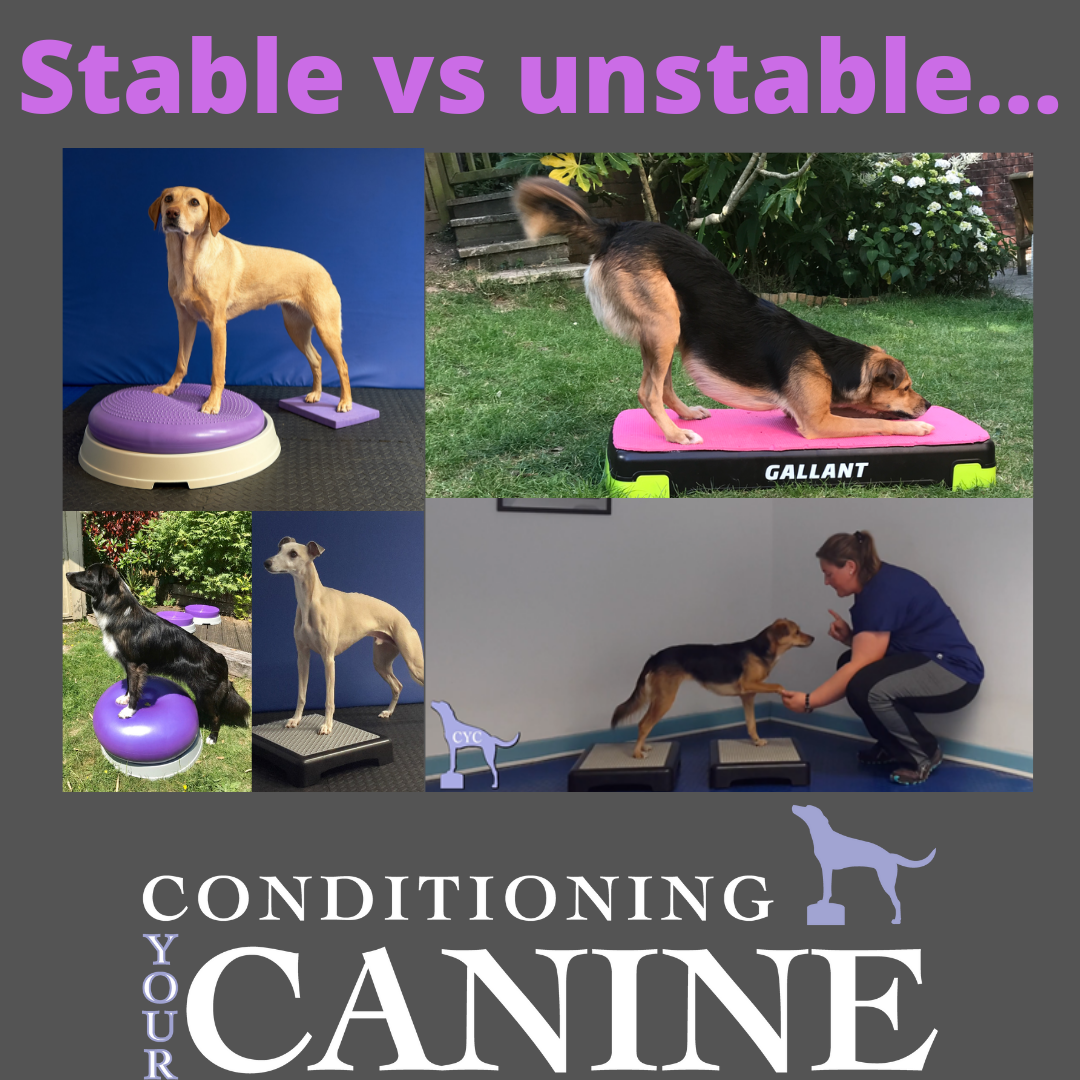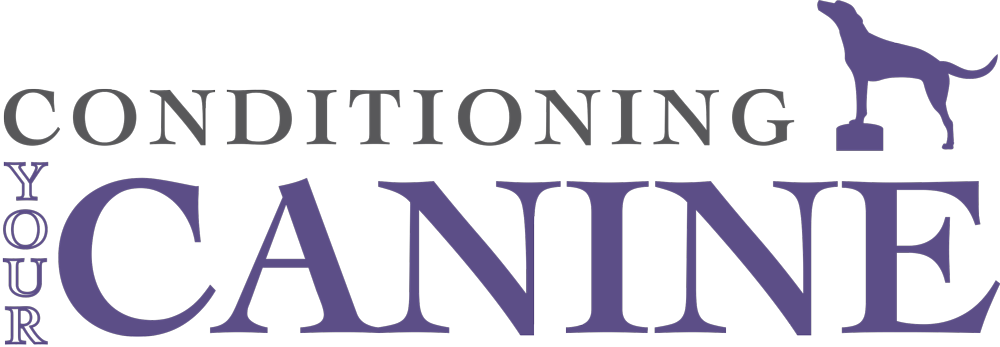In the majority of the exercises on the CYC platform, stable surfaces are chosen over unstable (eg donuts, peanuts, wobble cushions and boards). Where unstable surfaces are used, these are as an advanced progression of stable surface exercises.
Whilst we as CYC therapists do use unstable surfaces with our canine patients, we are very careful when and how these are included in an exercise programme. Training on unstable surfaces has been proven to improve proprioception in rehabilitation post-injury (however in quite specific diagnoses) and to reduce injury risk in the human patient. However, further research on humans has also shown that working on unstable surfaces can also increase the risk of injury if conducted inappropriately – and these findings can no-doubt be extrapolated to the canine body.
Research has also shown that, in human athletes, strength and power is increased by stable surface over unstable surface work (Cressey, 2007). This study also proposed that, due to the requirement to maintain balance on unstable surfaces, the movement in question might be performed to a lower standard than if on a stable surface.
When do you recommend unstable surface exercises to your patients? Are they capable of doing the movement pattern correctly, and in good form, on a stable surface first? What are your goals of asking your canine patient to perform an exercise on an unstable surface? We are always interested to hear how therapists are using CYC and to get feedback so do get in touch!

